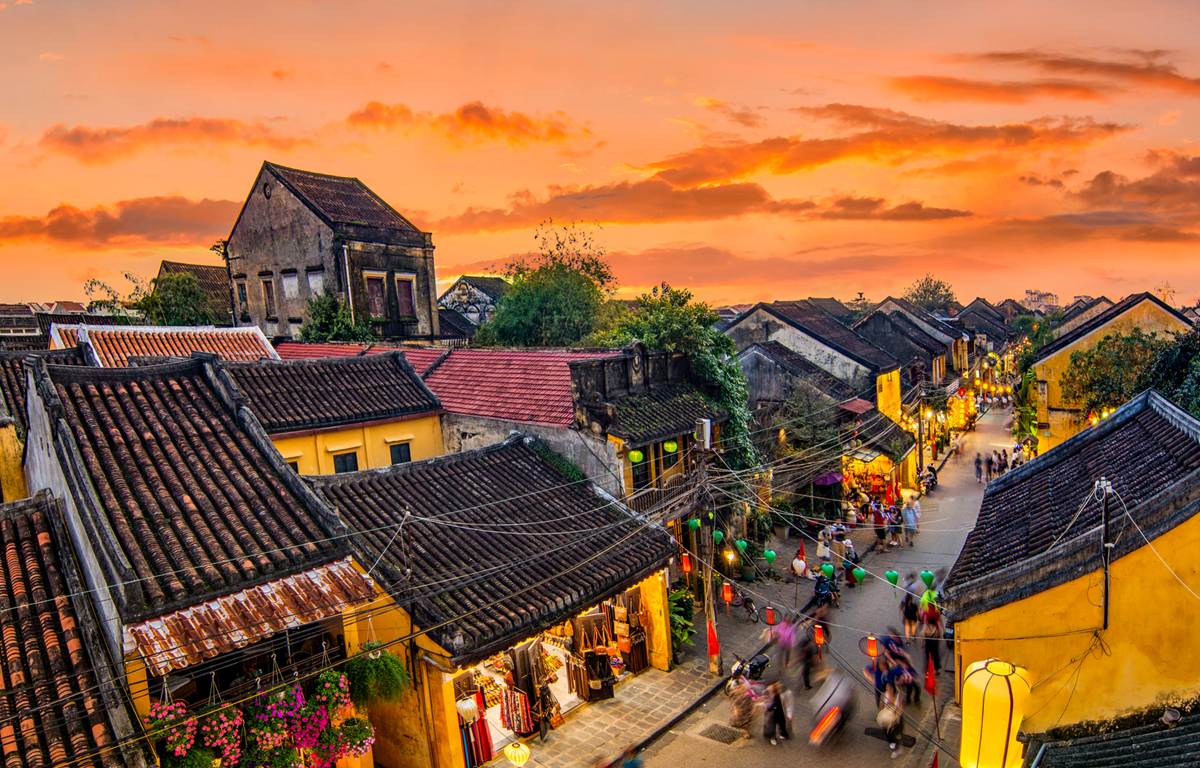
Charging an entrance fee to Hoi An Ancient Town is nothing new, as the local authorities have been collecting 120,000 VND per international visitor and 80,000 VND per domestic visitor since 2012.
However, the issue suddenly heated up after the city announced that it would implement a traffic diversion plan for tourists and locals starting May 15th, aiming to tighten control over the lax fee collection practices of the past.
So, is this fee level really reasonable, and what can Hoi An learn from other countries around the world , as well as other provinces and cities that currently possess heritage sites?
Examples for Hoi An
Venice (Italy) is a world-famous tourist destination. The city authorities have repeatedly proposed charging tourists a fee, most recently a proposed fee of 3-10 Euros per person (approximately 77,000-260,000 VND) starting in January 2023, depending on peak or off-peak season. This fee would apply to day-trip visitors and be free for overnight stays.
The Venice authorities' purpose in implementing the entrance fee was to control tourist overcrowding. Before the COVID-19 pandemic, Venice was one of the world's top tourist destinations, constantly overwhelmed by massive numbers of visitors throughout the year. Tourists from all five continents flocked to the city, filling its narrow streets and causing locals to migrate away.
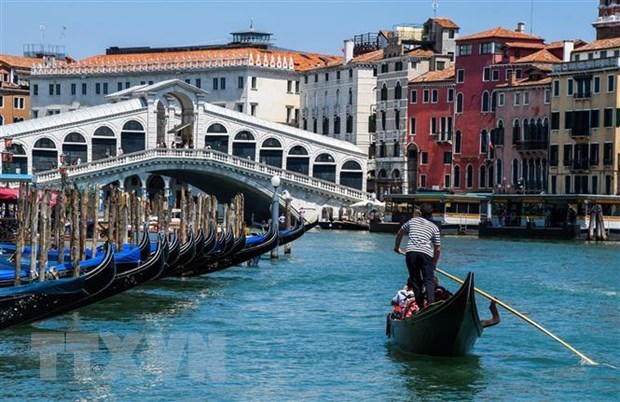 Tourists ride gondolas in Venice, Italy. (Photo: AFP/VNA)
Tourists ride gondolas in Venice, Italy. (Photo: AFP/VNA)Venice's overcrowding and environmental pollution caused by tourism have led UNESCO to threaten to revoke the city's World Heritage status. Under this pressure, local authorities were forced to plan to reduce the ever-increasing influx of tourists. Their immediate solution was to introduce an entrance fee.
However, earlier this year, Venice had not yet implemented this policy, and the specific time for its deployment has not yet been determined.
The purpose of Hoi An's fee collection is similar. According to Mr. Nguyen Van Son, Chairman of the People's Committee of Hoi An city, it is to "control tour groups and individuals coming to Hoi An for sightseeing."
"For a long time, Hoi An's space has been overcrowded, greatly affecting foreign tourists who have to buy tickets to visit. They feel it's unfair because many people enter the ancient town like them but don't have to buy tickets. And it is precisely this excessive number of visitors that hinders tourists from enjoying Hoi An's scenery," Mr. Son explained.
"In reality, this is simply a matter of streamlining and reorganizing things to avoid a situation where visitors and those entering for transactions and trade all use the same path, leading to chaos and disorganization ," Mr. Son further explained.
What are the fees and how are they calculated?
Essentially, according to representatives from several travel agencies, charging fees is necessary. Some even suggest increasing entrance fees at historical sites within the heritage complex to generate additional funds for conservation, restoration, and renovation, as well as for investing in cultural and artistic activities, festivals, developing new tourism products, tourism infrastructure, and environmental sanitation, as per local government policies.
However, determining the appropriate fee level and collection method is a crucial issue that managers need to carefully consider and calculate.
Regarding the fees, according to the general assessment of travel agencies, the announced entrance fee to Hoi An World Heritage Site is low, considering its scale.
For example, domestic World Heritage sites such as the Phong Nha-Ke Bang cave system charge 150,000 VND/ticket for Phong Nha cave and 250,000 VND/ticket for Thien Duong cave; Ha Long Bay charges 290,000 VND/ticket; Trang An scenic complex charges 250,000 VND/ticket; and Hue Imperial Citadel charges 200,000 VND/ticket…
Compared to other heritage sites in the region such as the Taj Mahal in India (approximately 300,000 VND/ticket) and Angkor Wat in Cambodia (approximately 900,000 VND/ticket), the entrance fee to Hoi An is also the lowest.
However, the price comparison in this case is not convincing.
Disagreeing with the price comparison, a domestic tourism expert argued that Phong Nha-Ke Bang, Ha Long Bay, Trang An, the Imperial Citadel, and Angkor Wat… are all separate tourist complexes with no local residents.
Meanwhile, tourists visiting Hoi An not only sightsee but also utilize a wide range of services such as dining, accommodation, boat trips, and shopping.
 International tourists visit the Kong: Skull Island film set in Trang An, Ninh Binh before it is dismantled. (Photo: Mai Mai/Vietnam+)
International tourists visit the Kong: Skull Island film set in Trang An, Ninh Binh before it is dismantled. (Photo: Mai Mai/Vietnam+)One witty commenter remarked, "I'm a tourist vacationing in the outskirts of the Old Town, and my only daily needs are to go to the center of Hoi An to enjoy local specialties or go shopping. Does that mean I have to buy an entrance ticket every time I visit just for a bowl of Cao Lau?"
Therefore, the current method of collecting entrance fees to the ancient town – simply buy a ticket upon entry – is inappropriate. The fee collection for visiting Hoi An needs to take into account the inherent appeal of its rich daily life, a blend of old and new, the unique traditions of its cuisine and fashion, the cultural nuances reflected in the street decorations, the voices, laughter, and communication styles of its people... Don't be so focused on the small gains that you miss out on the bigger ones.
Regarding the statement by the Chairman of the People's Committee of Hoi An City that "fairness must be ensured in the sale of entrance tickets," many people agree and believe that it is necessary to eliminate discrimination between foreign and Vietnamese tourists to avoid creating a negative impression on tourists in general.
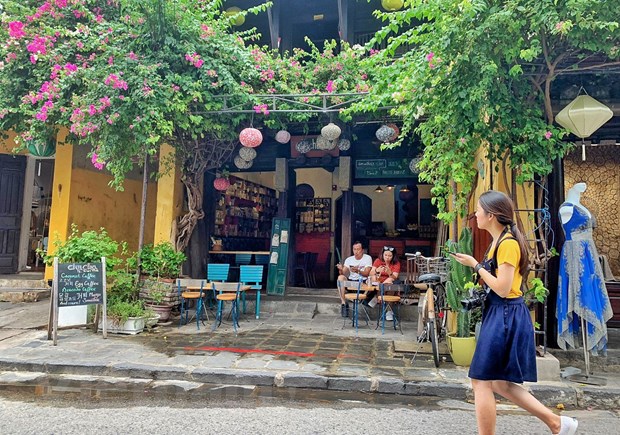 Tourists visit the old town. (Photo: Mai Mai/Vietnam+)
Tourists visit the old town. (Photo: Mai Mai/Vietnam+)According to Dr. Nuno F. Ribeiro, Senior Associate Dean of the Tourism and Hospitality Management Department at RMIT University Vietnam, statistics from 2019 show that domestic Vietnamese tourists spent $9.6 billion, while international tourists spent $12 billion; the average spending per domestic tourist was $61 and per international tourist was $673. Thus, international tourists spent an average of 11 times more than domestic tourists.
This is the key reason why the tourism industry has set a goal for this period: how to open its doors to welcome back foreign tourists after more than three years of the COVID-19 pandemic.
Returning to the issue of Hoi An's fees, some experts argue that, at a time when the world is still not enthusiastic about visiting Vietnam, why add unnecessary burdens with unnecessary charges? They suggest a more sustainable approach: simply attract visitors, offer them delicious food, and provide thoughtful and professional hospitality... they will willingly open their wallets in one way or another.
On the other hand, although domestic tourists spend significantly less than foreign tourists, they represent a potential and sustainable source of visitors if we know how to attract them.
HP, a frequent visitor to Hoi An, shared: “Before, I liked going to Hoi An because it was peaceful, exceptionally quiet, and the people were hospitable. But now it's chaotic, noisy, crowded... Moreover, there's nothing new, it's just the same old thing... The number of people and businesses providing services has increased, but professionalism is lacking, and many essential services that tourists need are missing.”
According to Ms. N.D., a "Hoi An addict" who often rushes in to eat a bowl of Cao Lau many times a year, "Hoi An attracts many people not for sightseeing, but to come there, breathe the air, and walk along the familiar streets, through the narrow alleys nestled among the houses with tiled roofs..."
"The feeling of sitting by the river, holding a thin rice cracker, scooping up clams from a plate with tiny clams the size of buttons on my grandmother's shirt... and watching the lanterns drift lazily on the Hoai River, carrying away memories, nostalgia, and even small wishes... it's so beautiful and unique to Hoi An," shared Ms. N.D.
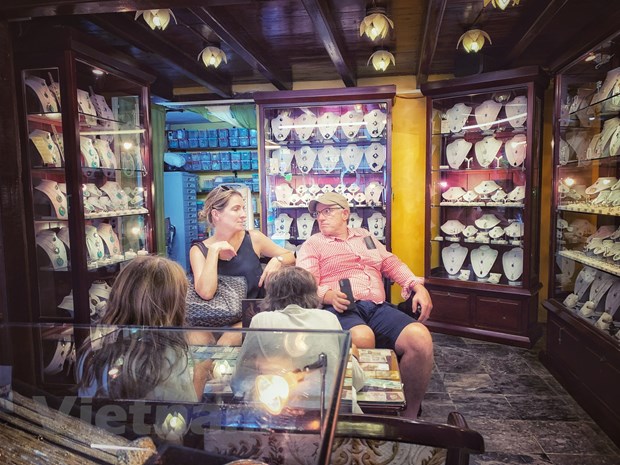 International tourists shopping in Hoi An. (Photo: Mai Mai/Vietnam+)
International tourists shopping in Hoi An. (Photo: Mai Mai/Vietnam+)For people like Ms. N.D., perhaps they wouldn't mind paying a small entrance fee to "buy" the unique experiences that only Hoi An offers, but that fee, like the barrier separating the visitors, will certainly reduce the willingness to "rush back home..." as has been the case until now.
As a tourist from Hai Phong humorously remarked about Hoi An's fee collection policy: "People throw in the 'shrimp' to catch the 'big fish,' but we keep focusing on catching the 'shrimp' and let all the 'big fish,' 'crabs, and other seafood' escape..."
| Currently, visitors who purchase tickets can tour and listen to guided tours at the Japanese Bridge, Cam Pho Temple, Tuy Tien Duong Minh Huong Pagoda, Quan Cong Temple, Hoi An Museum, Quan Thang, Duc An, Phung Hung, and Tan Ky ancient houses, Tran family church, Nguyen Tuong family church, Fujian, Guangdong, and Chaozhou Assembly Halls, etc. In addition, visitors can watch traditional art performances at 10:15 AM and 3:15 PM daily. Regarding the various opinions about Hoi An requiring all domestic and international tourists to purchase tickets for entry, the ancient town's leaders stated: They will consider all feedback and suggestions to adjust and supplement the tour to suit the actual conditions, rather than being stubborn and rigid. |


![[Image] The tenacious fighting spirit of Vietnamese women's football](/_next/image?url=https%3A%2F%2Fvphoto.vietnam.vn%2Fthumb%2F1200x675%2Fvietnam%2Fresource%2FIMAGE%2F2025%2F12%2F17%2F1765990260956_ndo_br_4224760955870434771-copy-jpg.webp&w=3840&q=75)

![[Photo] Prime Minister Pham Minh Chinh receives Lao Minister of Education and Sports Thongsalith Mangnormek](/_next/image?url=https%3A%2F%2Fvphoto.vietnam.vn%2Fthumb%2F1200x675%2Fvietnam%2Fresource%2FIMAGE%2F2025%2F12%2F16%2F1765876834721_dsc-7519-jpg.webp&w=3840&q=75)
![[Image] Leaked images ahead of the 2025 Community Action Awards gala.](/_next/image?url=https%3A%2F%2Fvphoto.vietnam.vn%2Fthumb%2F1200x675%2Fvietnam%2Fresource%2FIMAGE%2F2025%2F12%2F16%2F1765882828720_ndo_br_thiet-ke-chua-co-ten-45-png.webp&w=3840&q=75)
![[Live] 2025 Community Action Awards Gala](/_next/image?url=https%3A%2F%2Fvphoto.vietnam.vn%2Fthumb%2F1200x675%2Fvietnam%2Fresource%2FIMAGE%2F2025%2F12%2F16%2F1765899631650_ndo_tr_z7334013144784-9f9fe10a6d63584c85aff40f2957c250-jpg.webp&w=3840&q=75)
![[Photo] Prime Minister Pham Minh Chinh receives the Governor of Tochigi Province (Japan)](/_next/image?url=https%3A%2F%2Fvphoto.vietnam.vn%2Fthumb%2F1200x675%2Fvietnam%2Fresource%2FIMAGE%2F2025%2F12%2F16%2F1765892133176_dsc-8082-6425-jpg.webp&w=3840&q=75)




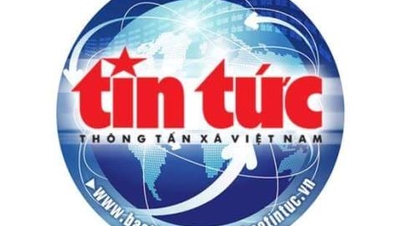










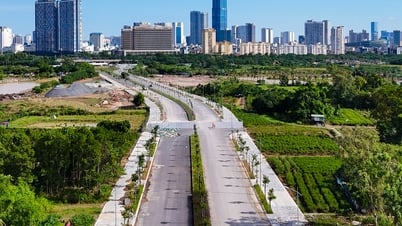










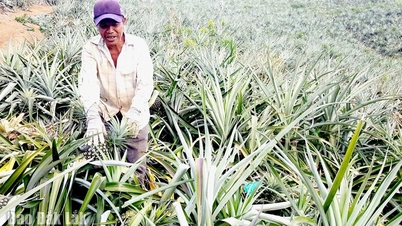





































![[Live] Closing Ceremony and Award Presentation for the "Impressive Vietnam Tourism" Video/Clip Creation Contest 2025](https://vphoto.vietnam.vn/thumb/402x226/vietnam/resource/IMAGE/2025/12/17/1765974650260_z7273498850699-00d2fd6b0972cb39494cfa2559bf85ac-1765959338756946072104-627-0-1338-1138-crop-1765959347256801551121.jpeg)
























Comment (0)